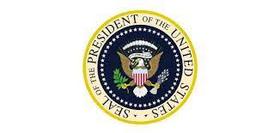Extracurricular Activities: Why They Are So Important (Updated for 2025)
Extracurricular activities—those experiences beyond the standard curriculum—remain indispensable in modern schooling. For parents, educators, and students navigating today’s educational landscape, the question is not whether extracurriculars matter but how best to integrate them. This 2025 update retains the structure of our original piece but reflects the latest data, policy shifts, and research insights.
The Evolving Landscape (2025 Context)
As of 2024–25, approximately 85 percent of U.S. public K–12 schools offer after-school programs, with 60 percent including academically focused components. Yet only an estimated 13 percent of all K–12 students participate in those academically oriented offerings. Meanwhile, 78 percent of public schools provided summer programming in 2023 designed to help students academically, and about 15 percent of all students engaged in those programs.
Beyond the U.S., global and national policies increasingly emphasize holistic education. In many countries, governments now mandate student clubs or “co-curricular activities” as part of formal schooling, aligning with frameworks like the 2030 Sustainable Development Goals and the growing emphasis on "21st-century skills." (For example, some Indian states will require student clubs in all schools by 2025.)
These shifts reflect a growing consensus: in a world of rapid social, technological, and workforce change, schools must do more than deliver core academics. They must cultivate well-rounded citizens, leaders, and innovators.
Why Extracurriculars Still Matter — with New Evidence 1. Academic and Social Gains
Decades of research support a positive association between extracurricular participation and student success in areas such as attendance, GPA, college-going aspirations, and engagement (i.e. lower dropouts). Recent studies refine our understanding of how these benefits accrue.
A longitudinal study using propensity score methods found that sports participation in Grade 8 had an indirect effect on Grade 9 academic outcomes via perceptions of friends’ prosocial norms, academic self-concept, and school belonging. Another analysis of middle school participation revealed that consistent engagement (versus delayed or discontinued) in sports and performance arts predicted better academic outcomes in Grade 9, controlling for baseline performance. A 2025 paper on extracurricular arts demonstrated that creative pursuits relate to higher levels of divergent thinking and improved academic performance across subjects.
Importantly, the motivation behind participation matters. A 2023–24 cross-cultural study found that students with self-determined motivation for extracurricular activities (i.e., driven by interest or personal growth, not external pressure) had better academic, psychological, and socioemotional outcomes through the mediation of school motivation and fulfillment of psychological needs.
2. Identity, Belonging, and Mental Health
Extracurriculars connect students to their peers, teachers, and communities—they anchor belonging. That sense of school attachment is correlated with fewer absences, fewer disciplinary incidents, higher self-efficacy, and sustained motivation. Wikipedia+2Edutopia+2 In the post-pandemic era—with attention to rising rates of student anxiety, social isolation, and mental health challenges—these nonacademic connections are more vital than ever.
3. Lifelong Skills & “Real-World” Readiness
Beyond academics and belonging, extracurriculars offer a distinct space for developing leadership, communication, collaboration, resilience, and problem-solving. A 2024 article argued that musical and athletic training (often counted among extracurriculars) effectively simulate real-world challenges such as long-term investment and iterative feedback. MDPI In addition, modern approaches like student-led research, hackathons, and social entrepreneurial clubs are bridging academic content and real-world problems, helping students build portfolios that resonate with selective colleges and future employers. JRA Educational Consulting+1
For competitive college admissions, algorithms and scoring models in recent years emphasize the depth and continuity of involvement, not mere breadth. For instance, a 2025 machine learning model for “holistic review” introduced an Extracurricular Impact Score (EIS) that weights leadership, project complexity, and sustainability of commitment. arXiv
Equity and Access: Persistent Gaps, New Challenges
No discussion of extracurricular importance is complete without confronting inequities.
Public vs. Private schools: A 2022 Brookings analysis found that private school applicants reported about 36 percent more athletic activities than their public school counterparts, and white students disproportionately held leadership and honors roles. Brookings
Socioeconomic Barriers: Costs for instrument rentals, travel, training fees, uniforms, or program fees remain formidable for lower-income families.
School Capacity Constraints: In the 2024–25 data, 42 percent of public schools said they could not accommodate all interested students for academically focused after-school programs. National Center for Education Statistics
Transportation, staffing, and scheduling: Many districts struggle to provide late buses or cover staff hours; some schools cite lack of staff (30 percent) or funding (37 percent) as barriers.
Participation gaps by race, class, and gender: Over decades, participation inequities persist and, in some realms, widen. PMC
Addressing these gaps demands intentional policy and design.
Best Practices & Strategies (2025 Update) 1. Prioritize depth over breadth
Encourage students to sustain involvement in fewer activities with greater commitment rather than fragmenting across many short-lived pursuits. Depth of leadership, sustained improvement, and project outcomes carry more weight today than superficial resumes.
2. Embrace student voice and co-design
Allow students to propose, lead, and evolve clubs. Ownership boosts engagement, relevance, and long-term viability. Some schools now maintain “student innovation funds” to seed new initiatives.
3. Use data and AI-informed matching
Emerging recommendation systems (e.g., hybrid AI for K–12) are being developed to help students discover extracurriculars aligned with their interests, skills, and schedules—while reducing bias and inequality in access. arXiv
4. Provide equitable supports
Fee waivers or subsidies: For fees, equipment, travel.
Transportation solutions: Late buses, ride-share partnerships, or shared community transit.
Partnerships with community organizations: Leverage nonprofits, local arts, civic groups to extend capacity at lower cost.
Cross-school shared programs: Combine resources across adjacent schools for, say, robotics or debate teams.
5. Monitor well-being and balance
While benefits are strong, overcommitment is real. Schools should counsel students on balancing academics, extracurriculars, rest, and mental health. Frequent check-ins and “stress audits” help prevent burnout.
6. Showcase outcomes and celebrate impact
Publicize student-led projects, competitive results, and community contributions. Use internal platforms like PrivateSchoolReview.com or BoardingSchoolReview.com to spotlight success stories and encourage peer inspiration.
Real-World Examples (2025)
Harvard-Westlake School (Los Angeles) revamped its club structure such that every student must join exactly two sustained clubs per year—one passion-based, one service-based. The shift reportedly increased year-over-year retention in student organizations by 20 percent.
Blue Ridge School District (Virginia) adopted an “after 3 PM accelerator” model: block scheduling from 3–5 PM for elective or project-based clubs. Over two years, chronic absenteeism dropped by 12 percent and student satisfaction surveys showed a 15 percent boost in school belonging.
In Kerala, India, a 2025 mandate requires all primary and secondary schools to incorporate “Student Activity Units” (SAUs) covering arts, literature, environment, debate, and traditional sports. Some schools have allowed rotation across SAUs each term, giving all students exposure without overburdening.
Conclusion: Commitment Is Key
In 2025, the imperative for robust extracurricular programming is stronger than ever. These experiences foster connections, build confidence, and help students translate knowledge into action. But their value is realized only when access is equitable, commitment is sustained, and students are supported rather than overextended.
Schools should treat extracurriculars not as add-ons but as integral to a 21st-century education. Parents and educators alike should guide students toward balance, passion, and longevity in their pursuits. In doing so, we prepare young people not just for college, but for purposeful lives of leadership, creativity, and contribution.















